

Hawkbill sea turtle
Seven species of sea turtles in the world have been identified so far that five species have been entered into the Persian Gulf and the Oman Sea, and unfortunately, throughout the world, the population of hawksbill sea turtle is declining sharply due to human exploitation.
The hawksbill sea turtle is one of two species of marine turtle that is laying eggs on the coast of Hormozgan province. The tortoise snout is such that it is suitable for evaporation of its main food, the sea sponge, from coral reefs and it is in the form of an eagle’s beak.and this turtle its famous for its snout.
Because one of the most important factors in the extinction of animals in the world is destroying their habitant the Department of Tourism, Cultural Heritage and Handicrafts of the Qeshm free zone to maintain the habitat of this creature in an immediate and brutal action of 25 kilometers from the southern coast, (125 meters) from the sea line to the beach in the framework of the Free Zone Laws, is protected area. The existence of large sea turtles and their laying on these coasts is an ecotourism attraction of Qeshm Island, so that in many countries such as Oman, UAE, Australia, these turtles are a good source of income for the tourism industry. In Hormozgan, because the weather is warm these turtles laying their eggs in the second half of March to the end of May.
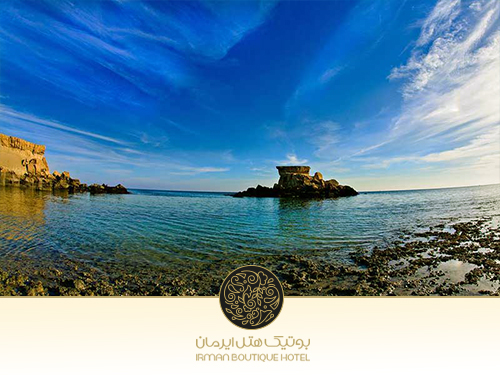
Naz Islands Beach
This 3km-long Golden Island by clear, shallow and mostly calm waters is easily the most popular beach on Qeshm Island. It’s full of Iranian families who are on holidays in high season. You can easily enjoy camel riding and Para-motoring along the beach. At low tide, it’s also possible to get to the three small Naz Islands when it is low tide.

Hengam Island
Hengam Island which is located in the southern coast of Qeshm, is known for its corals and wildlife, including birds, gazelles and dolphins. There is a small fishing village with genial and lovely people who are selling seafood. You can get there from Shibderaz by boat.

Namakdan Salt caves
Mountains of Qeshm have turned into salt caves as a result of an accumulation of sea water in deep fault and subsequent precipitation of salt. These caves are not only important as a tourist attraction but are also geological hallmarks. Caves are more than 6 km long. Namakdan salt dome is among natural attractions of Qeshm Island, which attracts a lot of tourists every year. Salt caves are located to the south of Namakdan and are nearly 20 m high. This cave is the longest salt cave in the world and its around 6850 meters long. According to recent researches, breathing in the caves may be useful for curing asthma.

Strait of Chahkooh
It is located in island’s northwest and it can an unforgettable experience for you. You can climb up to the intersection of two narrow vertical canyons and drink from a chah (well) that has been used by shepherds for centuries.
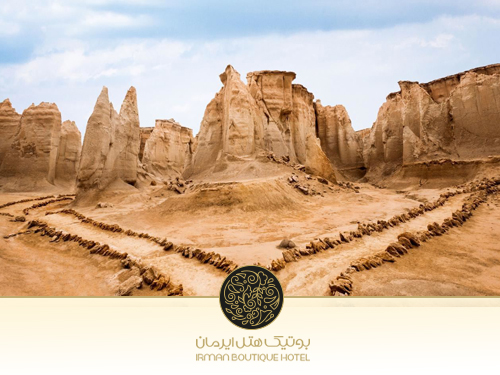
Valley of Stars
It is one of the most incredible, stunning and spectacular natural sites on Qeshm Island which has magnificent canyons which were formed over centuries by erosion. Wandering around this valley can absolutely be a magical and unforgettable experience for you. Just pack your stuffs and visit it right away!

Berke Khalf Village, Iran’s Most Clean Village
A village in the vicinity of the valley of fallen stars, with people against trash, as if a cleaning competition in this village is ongoing. Every morning, the housewives take the broom and clean the whole house and then they come in the street and clean four sides of their house. Some women clean up even more of this radius, and some people clean so much that the landscape around their home is completely clean. When the marriage ceremony is in progress in the village, all the women in the village will sweep and clean the village altogether.
This village is located 19 km from Qeshm. The name of the village of Berke Khalf, which has a very warm people, consists of two words of the Berke and Khalf. There is a pool of water in this village that seems to belong to someone called Khalf, and this name has got permeant in this village. The access road to the village is paved, and from the village to the beginning of the valley of stars, a road is about 500 meters long with suitable conditions for riding cars. The people of this village are very important in protecting the environment. People in the Berke Khalf village protect a species of endangered oysters in the name of black oyster.
Other arts of this village are arts such as Gholabton Doozi and Khos Doozi.
Gholabton Doozy is a traditional sewing with hook that you can design your scarf. Khos Doozi is also a unique art that is sewn on a scarf and more on traditional shawls.
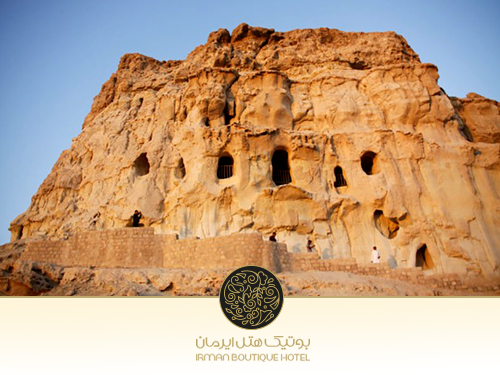
Khorbas Caves
In Qeshm Island’s southeast, you’ll find this almost vertical limestone cliff pockmarked with caves. They are said to have sheltered local villagers seeking refuge from pirates and bandits raiding the island in the past centuries.
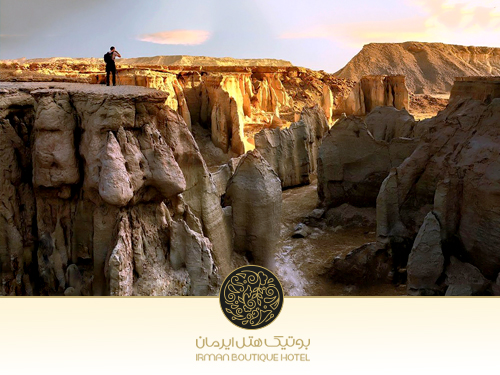
The valley of statues
The astounding valley of statues is located in the southern part of the Hara Forest. The valley has come to this name because of numerous natural forms and natural conquests, and the survivor of a tall earth has been severely eroded.
What is seen in this area is the survivor of the high plain, once connected to Qeshm’s roof. The gradual rise of the island has caused the coast to retreat and expand the land area. This section, which is now called the valley of statues, is one of the areas that has suffered coastal erosion and massive destruction after underground waterlogging. This burnout decreases from the roof of Qeshm to reach the roof intact.
In the valley of statues, like many other parts of the island, the destruction of the hard lime layer, which is covered on soft layers, has improved the erosion and destruction of the formations, and wherever the coating layer remains, soft formations are also below It is preserved, and this is why here you can see the heights of an island in the midst of low and worn ground. In this area, there are a variety of volumes and interesting and amazing shapes that have come into the hands of the power of nature, and it has seemed like a masterful artist, who has been busy for millennia and shaping rocks and dirt.
In parts of this valley, there are many fossils that are more commonly found in bivalves and accumulate in masses in some places.
Other remarkable sights in this area are the presence of interesting sedimentary phenomena such as mud cracks, which create a very beautiful landscape in the background of valley sight. During or after rain, it should be noted that the land is very sticky and swamp in these places and may cause problems for tourists.
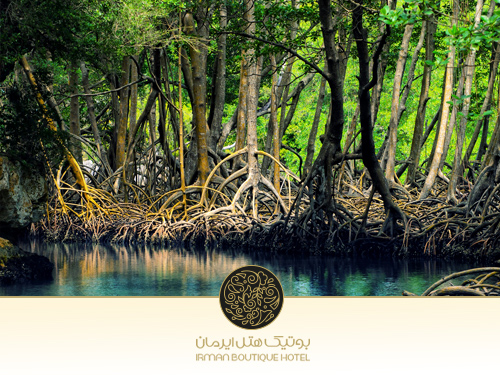
Harra Forest
This protected natural sight is the Persian Gulf’s largest mangrove forest – which is a must-see option for those who adore nature! In spring, more than 150 species of different migrating bird choose this forest as their destination such as the great egret and the western reef heron. The endangered green turtle, humpback and common dolphin can also be seen. You can easily surf around this amazing and magical forest with boats which there are plenty of them.